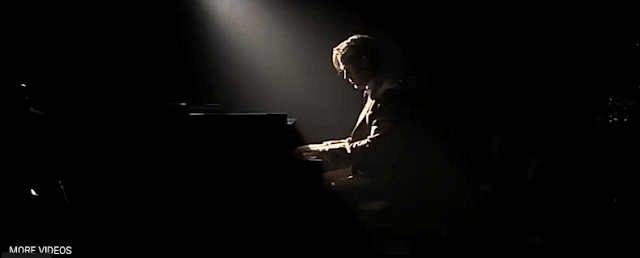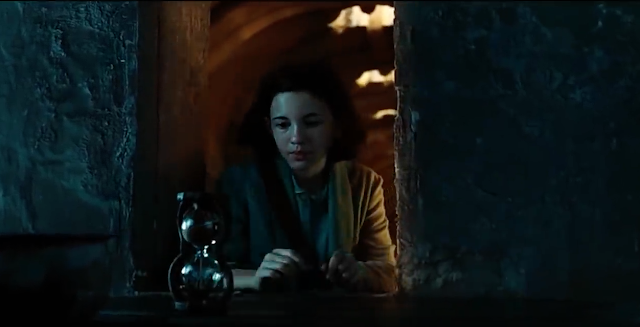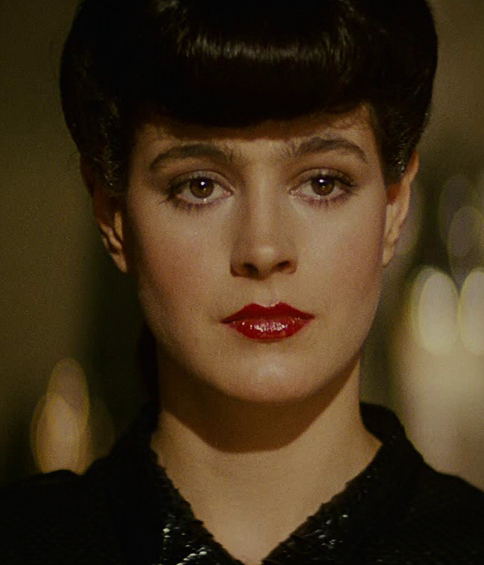La La Land
La La Land essay
I believe that cinematography is important in establishing strong responses towards the key characters, however I don't believe that it is the only important factor.
I believe that cinematography is important in establishing strong responses towards the key characters, however I don't believe that it is the only important factor.
The opening shot of the final scene in "La La Land" is a long shot from Mia's perspective, it zooms in as the lighting gradually fades into darkness before a spotlight appears shining on Seb. This is lacking in verisimilitude and so allows for the audience to be swept into passive as they can associate with Mia who is focussing only on Seb. This puts a spotlight on her feelings for him, showing the audience that he means so much to her. To me, after spending an hour and a half following their blooming romance, this alternate ending and her look of pure adoration, implied from the super focusing, which ends up in a medium long shot with the spotlight creating an almost silhouette, will spark a huge reaction making it easier for the audience to align with Mia. This is in addition to having a preferred reading of their romance allowing the audience to escape from the earlier verisimilitude in a scene that harks back to the older extravagant 1940s and 50s musicals via intertextual references. This is in major contrast to the verisimilitude that an active audience would have noticed in scenes prior to this, which continues a tradition of harsher musicals that were often seen in the 70's like "Cabaret", an audience which took a preferred reading of the verisimilitude would probably become oppositional in reading as the shot has a very unrealistic lighting situation. The shot is very effective in allowing the audience to align with Mia however it also has the effect of showing how much Seb is suffering without her.
Shortly after, we are re-played an earlier scene of the film, when Seb was working in the restaurant and he barges past Mia - however, in an over the shoulder shot, we see the firing of Seb all over again The active audience would recognise this immediately, but it is an unnecessary detail added in to make the scene fit the early reproduction of it. From Mia's angle, we watch as Seb walks towards her and kisses her before she can compliment him. The colour scheme of this shot is very red symbolising the love that the two felt for each other. This is very obvious to someone actively watching all details, so they would take in the message probably taking an oppositional reading as they are fighting the sweeping non-diegetic music and the urge to allow the romance to sweep over them. The passive audience will subliminally be influenced by the red colours and associate it with love and probably take a preferred reading as they are already accepting the romantic elements. I think that this shot really lets the audience respond to Mia as earlier we watched as she attempted to praise Seb to no avail, but this time the perfect fantasy allows us to escape the harsh reality of life. We would have experienced this just from the plot, however in the kissing close up the shot orbits the two lovers symbolising a whirlwind relationship that had just bloomed, this enhances the enjoyment of the audience by making their kiss special and extravagant. For those who aligned with Seb before, they could take a negotiated reading of this because although he gets the romance he desires and his supporters will be pleased for him, it is at the cost of his verisimilitude as a character and his pessimistic view on life, so common in jazz musicians.
Following a straight cut to a tracking two person midshot, the couple are surrounded by clicking diner starting off a dance sequence that symbolises how their life could have been if they had started their romance more traditionally in terms of the genre. The sequence confirms all verisimilitude is dead meaning that a fraction of the audience will remain active and oppositional. The shot commences the dance sequence that continues across many earlier sequences from the film and shows a new unseen dream of their fantasy. This whole sequence in itself will give strong positive feelings and responses towards the lovers from those taking a preferred reading and negative feedback from those who are oppositional, which shows that the cinematography isn't fully responsible for spectators' strong responses to the key characters. As the scene progresses we are shown another factor that will create a strong response from an active audience, the intertextual references in the mise-en-scene. This is throughout the sequence as it harks back tho the golden age of Hollywood musicals, and then has the mise-en-scene recreate or hint at "Singing in the Rain" and "On the Town" to name but two musicals from that era. For me, this creates a link between Seb and Mia to Gene Kelly and Cyd Charisse, which both establishes them as good dancers but links them to the theme of romance, heavily featured in the plots of Hollywood musicals. I found this allowed me to react strongly to Seb because I was able to take a preferred reading, as an active audience member, due to a fondness of those older musicals; I felt a stronger connection to him.
Following a straight cut to a tracking two person midshot, the couple are surrounded by clicking diner starting off a dance sequence that symbolises how their life could have been if they had started their romance more traditionally in terms of the genre. The sequence confirms all verisimilitude is dead meaning that a fraction of the audience will remain active and oppositional. The shot commences the dance sequence that continues across many earlier sequences from the film and shows a new unseen dream of their fantasy. This whole sequence in itself will give strong positive feelings and responses towards the lovers from those taking a preferred reading and negative feedback from those who are oppositional, which shows that the cinematography isn't fully responsible for spectators' strong responses to the key characters. As the scene progresses we are shown another factor that will create a strong response from an active audience, the intertextual references in the mise-en-scene. This is throughout the sequence as it harks back tho the golden age of Hollywood musicals, and then has the mise-en-scene recreate or hint at "Singing in the Rain" and "On the Town" to name but two musicals from that era. For me, this creates a link between Seb and Mia to Gene Kelly and Cyd Charisse, which both establishes them as good dancers but links them to the theme of romance, heavily featured in the plots of Hollywood musicals. I found this allowed me to react strongly to Seb because I was able to take a preferred reading, as an active audience member, due to a fondness of those older musicals; I felt a stronger connection to him.
With both the intertextual references and the plot being important in generating responses from the audience, the role of the cinematography becomes clearer as a technique to enhance the mise-en-scene and all of the other factors. This means that the cinematography is extremely important as it affects all of the other factors, for example in the tracking extreme long shot which pays homage to the film-within-a-film fantasy number in "Singing in the Rain". The shot has allowed a calm build up with it constantly panning out to incorporate all of the mock-town and the dancers in it. This amplifies the effect of the reference by making it more obvious, increasing the chances of recognition in the audience.
So in conclusion, I find that cinematography is very important in creating strong responses to the key characters because of the associations in the colour scheme and the way it works with the plot and the mise-en-scene, both of which are also contributing factors in themselves.





Comments
Post a Comment